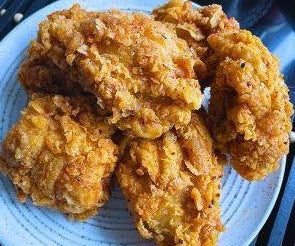Introduction: Maple Beef Jerky
I love beef jerky. Especially the flavors you can find at the Whole Foods meat counter. But I don't love the prices so I decided to learn how to make jerky at home. Initially I was going to do this with just my oven, but after some research and discussing it with the husband, we decided to purchase a dehydrator.
This is my recipe for a spicy maple beef jerky that is also a tasty gluten free snack.
Step 1: BoM
Tools
Dehydrator(that hits at least up to 160 degrees)
Plastic bags
Sharp knife/meat slicer
Disposable gloves
Meat tenderizer
Thermometers
Meat
1+pounds of lean beef (eye of round, top round, bottom round, etc)
Marinade
1/4 cup soy sauce (gluten free)
2-3 tbs red pepper flakes (more or less depending on your spicy preferences)
1/2-1 cup 100% maple syrup
1/8-1/4 cup molasses (start with less, taste test the marinade after mixing--before adding meat--and adjust amount based on your preferences. I've found that more than 1/4 cup of molasses and the flavor starts to overtake the maple).
1/8 cup worcestershire sauce
2 tbs brown sugar
1 tsp Garlic powder or fresh minced garlic
--ADD THIS LAST/Right before adding the meat to the marinade---Curing salt (1/4 tsp per pound of meat) + enough cold water to cover the meat.
Step 2: Meat
You want to use a lean cut of meat without a lot of fat in it (fat rots jerky). Eye of round, top round (London Broil), and bottom round are all good choices. I tend to wait and see whichever is on sale and then buy that.
I don't have a jerky slicer, so I stick the roast into the freezer for a few hours before slicing. When the roast is a bit firm, I start by removing all the visible fat that I can and then depending on the size of the roast--slice it in half. One half I'll stick back in the freezer until I'm ready to cut it.
If you ask, you might be able to get the butcher at your meat counter to slice the meat to your specifications. I haven't had the luck of buying meat while someone was around to do this.
Step 3: Slicing
For softer jerky, cut 1/8-1/4" slices against the grain. For extra tenderness, pound each side of the beef with a meat tenderizer (the spiky end). Use the sharpest knife you have and try your best to get all the slices as similar as possible---otherwise some pieces will dehydrate faster than others and could become overcooked.
Step 4: Marinade & Marinate
Add all the marinade ingredients to a bowl, except for the curing salt and water, and mix well. Add the curing salt and mix again.
Pour marinade to containers with meat and mix up so the meat is all covered. Add as much cold water is needed to cover all of the meat.
Refrigerate for about 24 hours. 2-3 times during the marinating process, give the marinade a mix or turn the bag over just to make sure everything is getting some flavor.
Step 5: 24 Hours Later...
Remove the meat from the fridge and strain into a colander, you want to get as much liquid off the meat as you can for a faster dehydrating time. I like to press the slices between paper towels to get excess liquid off.
Step 6: Dehydrate
Layer your meat slices so that airflow isn't blocked too much. Don't crowd the trays.
When all the trays are filled put them in your dehydrator and turn the dehydrator on to 160 (the FDA recommended temp. for beef). You want to do 2-3 hours at 160 and then you can lower the heat to 130-145 to finish the jerky off.
You can also stick the jerky on an oven safe tray and cook for 10-15 minutes, when the temp of the meat hits 160 you can transfer it to the dehydrator trays.
I've found lowering the temp after a couple hours makes it easier to NOT over-dehydrate jerky.
Step 7: Waiting
After 2 hours take a look at your jerky, if it looks dry enough lower the heat and continue to check every hour or so. If you want your jerky a little tougher, leave it in the dehydrator longer. Otherwise, once the jerky bends and cracks, but doesn't break in half---it's done.
I've started letting the jerky sit in the dehydrator for an hour or so after turning the machine off.
Store in an airtight container for a few days to a few weeks (depending on the fat content of your meat).

Participated in the
Epilog Challenge 9

Participated in the
Gluten Free Challenge











